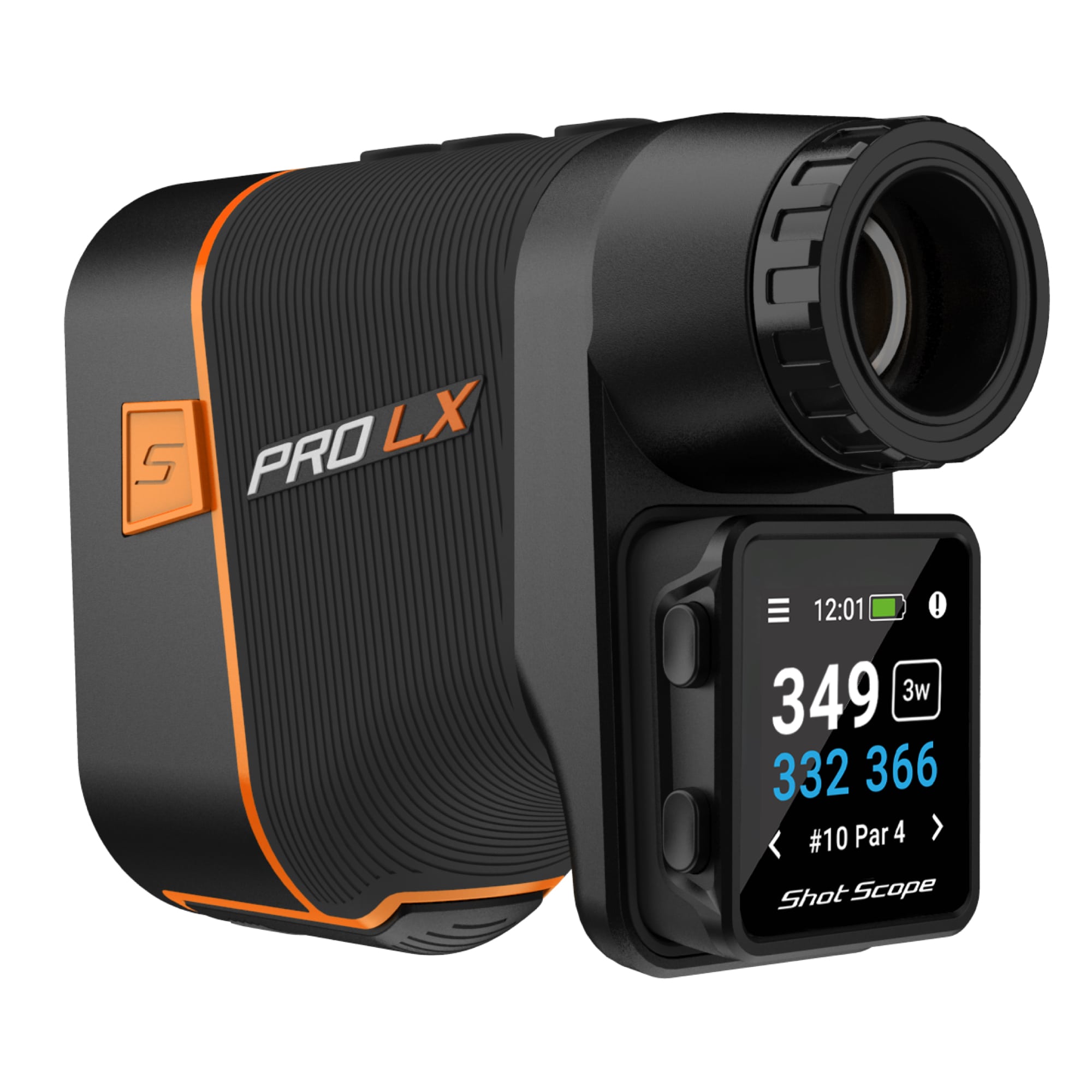I’m old enough to remember the catchy jingle for Certs, which went like this: “A delicious candy mint and perfect breath mint. Certs gives you two, two, two mints in one.” Don’t expect Shot Scope to roll out a similar slogan for the revolutionary PRO LX+, even if it is two, two, two distance-measuring devices in one—a high-end laser rangefinder plus handheld GPS with shot-tracking capabilities.
Do golfers need both a laser rangefinder and GPS unit? “There’s a growing trend to have multiple distance-measuring devices,” said Gavin Dear, COO, Shot Scope. “Avid golfers generally want distance to the pin , as well as to the front, middle and back of the green , and hazards, too.” True enough: Laser rangefinders are ideal for par-3 tee shots and approaches within 200 yards of the green. GPS products are an asset, in particular, on longer holes with fairway bunkers, water hazards or a dogleg. In addition, the technology helps with club selection on firm, fast courses (i.e., pinpoint yardage to the front edge of the green).

In the PRO LX+, the company’s H4 Handheld GPS unit magnetically attaches to the PRO LX rangefinder. Both the magnet and “lip” just below the eyepiece prevent the H4 from sliding off. The pocket-sized, 1-ounce GPS also attaches to a golf cart and clips to a belt or golf bag. This game-changing product is the only handheld GPS device with shot-tracking capabilities. Plus, Shot Scope has a proprietary course-mapping database (36,000 courses) and updates it each day, if necessary. “A GPS product is only as good as the mapping data underneath it,” said Dear. By contrast, many brands that sell golf-GPS products lease course data from third-party vendors and lack the same efficiencies.

More on the shot-tracking component. Simply screw the sensors into the grip end of clubs. Before hitting a shot, tap the butt of the club to the GPS screen. “We’ve recorded more than 170 million shots around the world. And, there are no subscriptions,” added Dear. Through the free Shot Scope app, players can view hundreds of stats, including percentage of fairways hit, strokes gained or average club distance, to analyze one’s strengths and weaknesses.
The PRO LX is a stud in its own right, with several features commonly found in high-end laser rangefinders, plus an added wrinkle or two. For instance, the digital readout can alternate between two colors—red or black. The black numbers are easier to read in bright light or blue skies, while the red display is better in darker conditions such as early-morning light or dusk. The 7-ounce PRO LX provides yardages for objects up to 900 yards away, with accuracy within one yard. The unit vibrates to indicate it’s locked on the target and has “Slope” technology, which can be turned on or off with the flick of a switch.
Here’s one more reason to purchase the PRO LX+ at $350. When sold individually, the PRO LX rangefinder ($250) and H4 Handheld GPS ($150) cost $50 more than the two, two, two-in-one package.

